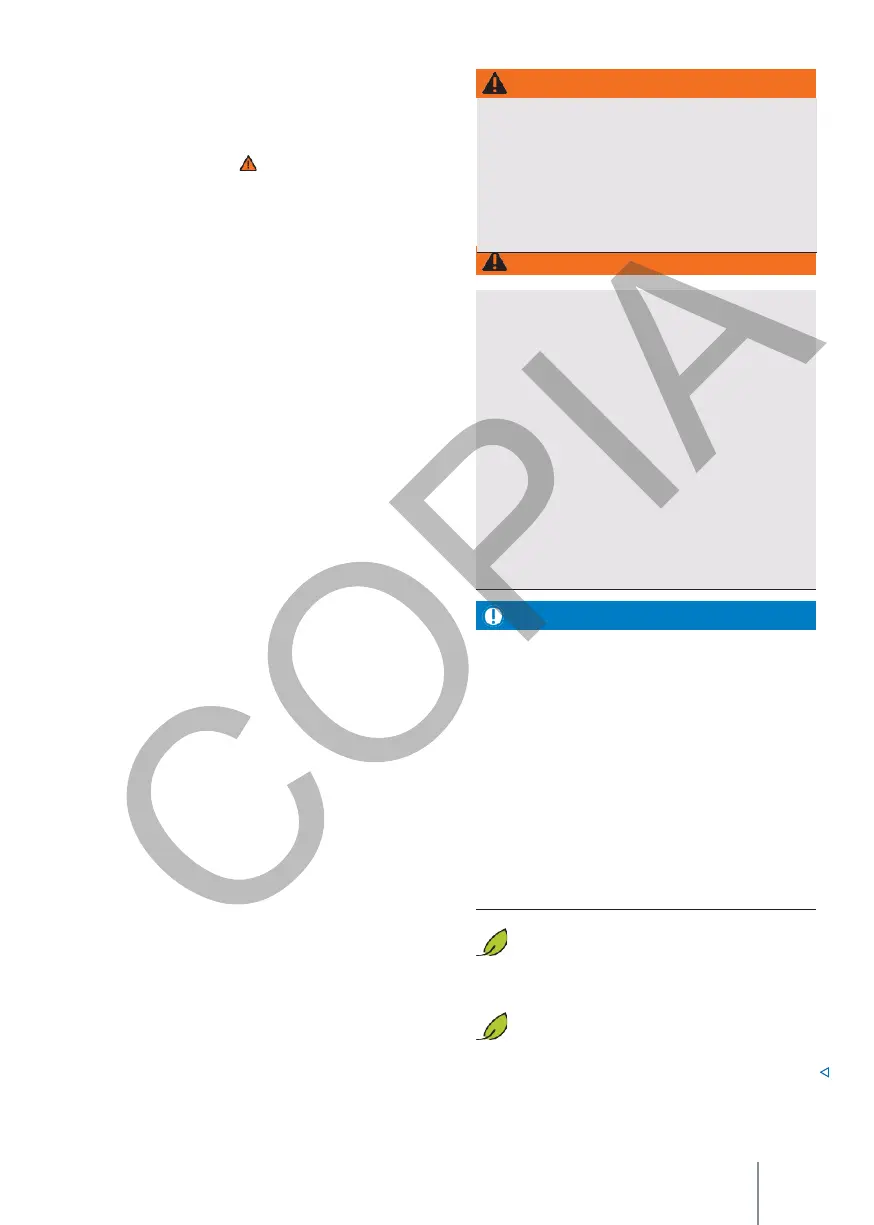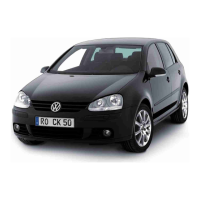Charging the 12-volt battery creates a highly
explosive mixture of detonating gases.
•
Charge the 12-volt battery only in a well-
ventilated area.
•
Never charge a 12-volt battery that is frozen
or has thawed. When the battery is
discharged, it can con-
gel at temperatures approaching 0 °C (+32
°F).
•
If the 12-volt battery has frozen, replace it
without fail.
•
If the cables are connected to the poles
incorrectly, a short-circuit may occur. First the
positive cable is clamped and then the positive
cable is clamped and then the positive cable is
clamped and then the positive cable is
clamped.
The negative is next.
Fitting the 12-volt battery
—
Switch off all electrical consumers and switch off
the ignition before screwing in the socket again.
—
First connect the positive cable and then the
negative cable → .
After the 12-volt battery has been connected and
the ignition switched on, various indicator lights
may come on. These warning lights go out after a
short distance at a speed of approx. 15 to 20 km/h
(10 to 12 mph). If the warning lights do not go
out, visit a specialist workshop and have the vehicle
checked.
If the 12-volt battery has been disconnected for a
long period of time, it is likely that the next service
→ p. 16 will not be indicated or calculated
correctly. In this case, the maximum permissible
maintenance intervals → p. 284 must be observed.
Vehicles with "Keyless Access" keyless locking and
starting system → p. 68: If the ignition cannot be
switched on after the 12 V battery has been
connected, lock and unlock the vehicle from the
outside.
Then try switching the ignition on again. If the
ignition does not switch on, seek the assistance of
qualified personnel.
Automatic disconnection of consumers
In the event of excessive stress on the battery, the
12 volts, the intelligent on-board network
management system automatically applies certain
measures to prevent it from discharging:
—
The idle speed is increased so that the al-
ternator supplies more current.
—
If necessary, the power of the most powerful
controllers is limited or, in the event of an
emergency, they are switched off completely.
—
When the engine is started, the power supply to
the 12-volt socket and the ignition may be
briefly interrupted.
The on-board network management cannot always
prevent the 12-volt battery from discharging. This
is the case if, for example, the ignition is left
switched on with the engine switched off or the
parking or position light is left on for a long time.
Factors causing the
12-volt
battery to
discharge
—
Prolonged stops without starting the engine,
especially if the ignition is left switched on.
—
Use of electrical consumers with the motor
switched off.
•
Never disconnect the 12-volt battery when the
ignition is switched on.
or running engine. Also, never use a 12-volt
battery that does not have the vehicle's battery
specifications. The electrical system or certain
electronic components could be damaged and
electrical malfunctions could occur.
•
Never connect to the mains power socket of the
12 volts or to the cigarette lighter accessories that
sumi-
The system must be connected to a power
source, such as solar panels or battery chargers,
to charge the 12-volt battery. Failure to do so may
damage the system.
vehicle's electrical system.
The battery may contain toxic substances, such
as sulphuric acid and lead. De-
The 12-volt battery must be drained in accordance
with the applicable regulations.
The electrolyte may contaminate the
environment. If any operating fluid leaks out, it
must be recalled.
pull it out and dispose of it properly.
Incorrect attachment of the 12-volt battery or use
of unsuitable batteries can cause short circuits, fire
and serious injury.
•
Use only 12-volt, maintenance-free, non-
spillable batteries that have
the same properties, specifications and
dimensions as the factory-fitted battery.

